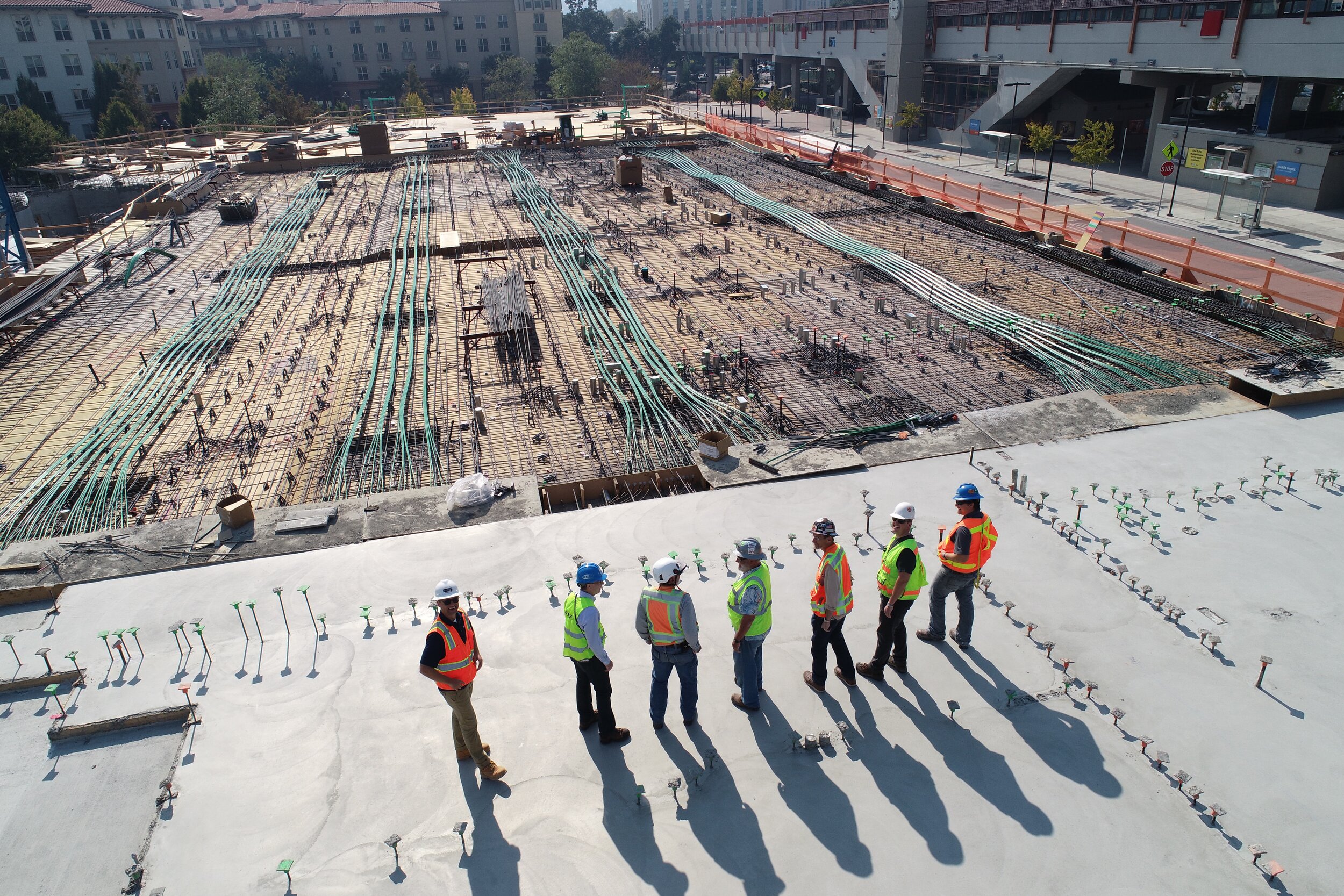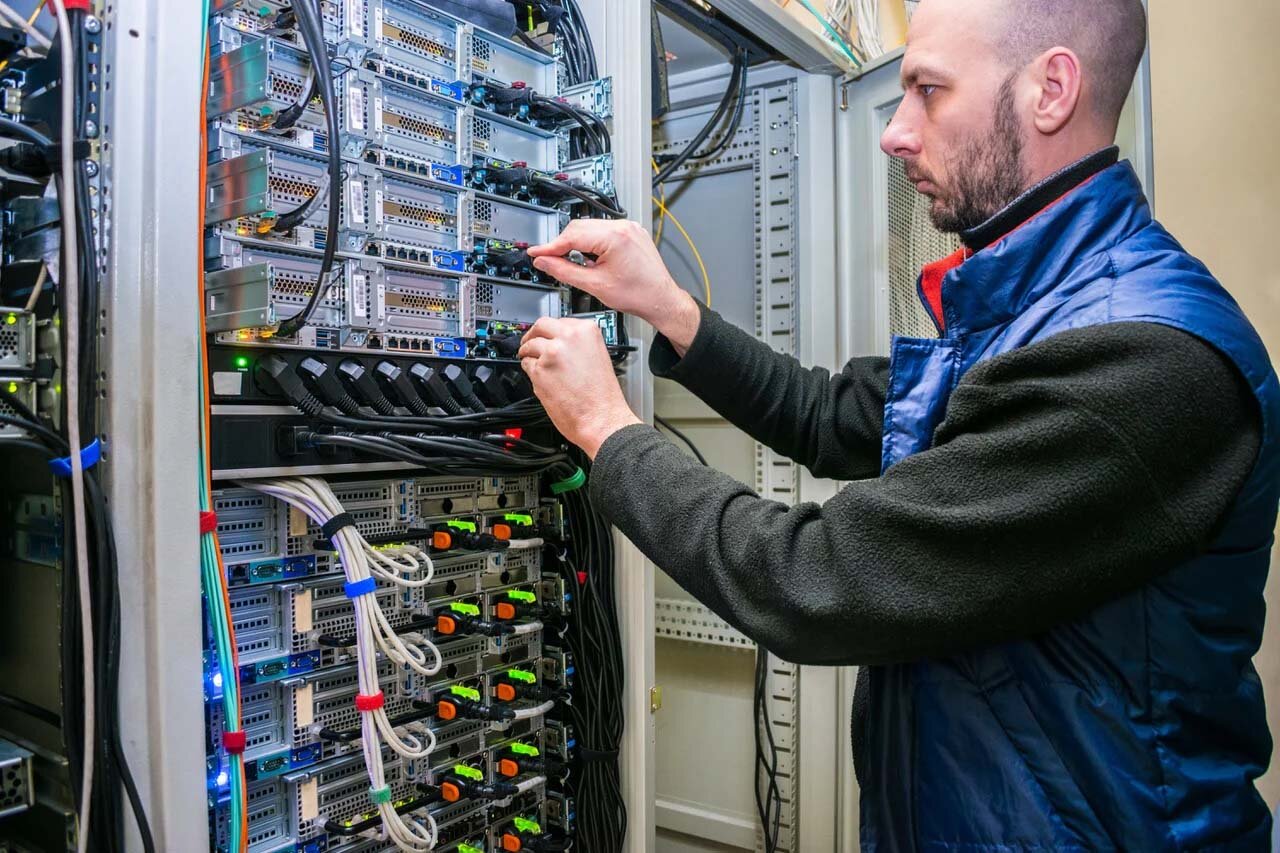Data centres are the hub of enterprise. These facilities centralise your IT operations and equipment to support you in storing, processing and disseminating both applications and data. As the enterprise hub for your most critical assets, they form a critical part of your daily operations.
Reliability, security and sustainability are today’s greatest data centre challenges that organisations prioritise. We’ll outline a high-level view of data centre architecture and the process of building one.

What are sustainable data centres?
Sustainable data centres, or green data centres, utilise an infrastructure designed for minimal environmental impact. They use energy-efficient technologies to reduce the energy consumption of their assets.
It’s the leading light of data centre innovation and is why global data centres decreased their energy demand to 50 terawatt-hours in 2019, down from 97.6 terawatt-hours in 2015.
So, what are some of the innovations found in cutting-edge sustainable data centres today?
- LinkedIn – The social media giant uses free cooling using advanced water-side economisers within its Oregon facility.
- Microsoft – Under its Project Natick initiative, Microsoft’s underwater data centre is cooled using raw seawater.
- Google – Google utilises the power of DeepMind, an AI-powered neural network, to predict how different actions will impact energy consumption to make the most environmentally friendly decisions within its data centres.
- Apple – Apple powers its Nevada facility using its self-built solar farm.
- Facebook – Facebook established a data centre in Nebraska and relied on a wind farm to power its facility.
These are examples of how some of the world’s biggest names are making their critical data centres more sustainable; but, you needn’t be a multinational corporation to make your data centre sustainable.
What are the different types of data centres?
No two data centres are the same concerning their architecture, design or purpose. However, besides the green data centre, you will come across various other types of data centres.
So, what are the primary data centre types?
Enterprise Data Centres
These are private facilities designed to support a single organisation with unique network needs. Alternatively, they may be employed by smaller companies that cannot yet implement economies of scale. All enterprise data centres are custom-built to support the needs of the organisation.
Colocation Data Centres
Also known as multi-tenant data centres, these centres are used by multiple companies without the capacity or the space for an enterprise data centre. All space is leased, allowing companies to scale up and down.
Hyperscale Data Centres
These centres support large-scale IT infrastructures. It may surprise you that Amazon, Google and Microsoft own more than half of these. To give you a sense of scale, these data centres have at least 5,000 servers over 10,000 square feet of space.
Edge Data Centres
Otherwise known as Micro Data Centers, these solutions are small and located near those that require real-time data processing and analysis. These futuristic solutions will only become more popular as next-generation technologies like 5G, autonomous vehicles and robotics become a greater part of our lives.
Find out moreContainer Data Centres
These data centres are individual modules that offer a plug-and-play approach to data centres. They tend to be delivered and stored within shipping containers, making them ideal for companies requiring temporary data centre deployments for purposes like digital classrooms.
What are the main elements of a data centre?
Data centres may have different purposes, but all have the same essential components. These include:
- Servers
- Storage systems
- Switches
- Routers
- Firewalls
- Cybersecurity systems

All data centres will contain servers, which are high-performance computers with substantial memory capacity. Servers are incredibly fast and can work together to accomplish a specific function.
Data centres use storage devices to help run these servers, including solid-state, hard-disk and robotic tape drivers
Beyond these basics, you also have communication systems, which consist of network interface controllers, routers, switches and an endless supply of cables criss-crossing throughout the data centre to ensure data gets to where it needs to be.
Alongside data centre hardware, data centres rely on software to keep everything running. For example, framework software and virtualisation software are often employed to reduce the number of physical servers.
Finally, security systems are also required at physical locations, including staff, biometric scanners, alarms, gates and more. From a safety perspective, the average data centre will also include highly advanced cooling systems to prevent downtime and data loss.
How does data centre design work?
Data centre design is the process of designing a data centre’s architectural layout and IT resources. It involves outlining an ideal framework, and then determining what is viable and whether the design meets the centre’s primary purpose, such as serving a particular client or a range of clients.
The data centre design process can involve an in-house team or hiring an expert team, like our team at Keysource, that can provide advice, expertise and guidance on building a new data centre.
As part of a successful data centre project, every facility must have a reliable power supply, the ability to create and store backups, clear communication paths, environmental control and security measures.
In short, it’s an in-depth process requiring careful thought and attention to every feature and mechanism.
What are the key requirements when designing a data centre?
Several considerations must be considered when setting up a brand-new data centre, from finance and resiliency to cooling and power efficiency.
These fundamental requirements when formulating a data centre design include:
- Total Cost of Ownership: New data centres are capital-intensive and require considerable investment to bring to life. Businesses must factor in these costs when determining whether their designs are viable.
- Power Efficiency: Data centres must be designed with a reliable power supply in mind. Particularly, if relying on renewable energy, your data centre must come equipped with backup generators and Uninterruptible Power Supplies (UPS) to avoid downtime.
- Cooling: Data centres generate tremendous amounts of heat, requiring an advanced cooling system to manage it. You’ll need to choose from a range of systems, including air cooling, liquid cooling and free cooling.
- Connectivity: Your design must incorporate high-capacity data communications to operate. Offering multiple connectivity paths and resilient connectivity is critical to avoiding poor redundancy.
- Security: Data security is critical, with a cyber attack occurring every 39 seconds on average. Both cyber and physical security must be factored into your design to prevent unauthorised access.
- Environmental: Designing an efficient data centre protects the environment and reduces ongoing costs. Any design must consider reducing the environmental impact of its day-to-day operations.
- Scalability: Any good data centre has space for future expansion. Thinking beforehand about future server nodes, racks and other features, futureproofs your design.
- Flexibility: Hardware and user needs evolve. Being able to reconfigure and repurpose your data centre ensures that you can continue to meet your goals as technology changes.
- Reliability: Reliability is critical for any data centre. As part of this consideration, you must think about how your data centre can continue to operate if the worst happens, otherwise known as disaster preparedness and management.
Designing a data centre is a complicated business. With so many requirements to account for, it underlines the importance of investing in professional help to ensure your design is ready for the now and future.
Data centre design challenges
Designing the data centre that’s right for you comes with its challenges.
One of the factors that will impact both your costs and your design is the location. Identifying the ideal location for your facility relies on understanding your needs and what’s available. For example, if designing an Edge Data Centre, its very nature implies that it must be located close to your base of operations.
Outlining your organisational needs and predicting what they could require for the future is also key. The best data centre designs are manufactured in such a way that allows for upgrades and retrofitting as organisational needs and technologies evolve.
Finally, more extensive data centres must also factor in their impact on local communities. For example, major constructions could cause disruptions to communities and businesses through traffic delays, lost revenue and noise pollution.
Within the UK, the design phase will involve cooperating and negotiating with local councils, business owners and other stakeholders to make your project a reality.
Although these are valid challenges to overcome, Keysource has experience in overcoming these hurdles. We know that data centres always benefit when finding a partner who is passionate about sustainable solutions that can not only overcome these challenges, but help you work towards ESG and net zero goals.
Each part of the design and build are split into stages, starting with Stage 0, this is when our teams outline the technical and financial feasibility of a project. Functions include site surveys, capacity planning and technical due diligence.
Followed by:
Guidelines and standards for data centre builds
Thankfully, you aren’t required to develop your data centre with zero guidance. Two primary international standards exist detailing the minimum requirements to build, operate and maintain a data centre.
During the design phase, your design will be expected to adhere to the Telecommunications Infrastructure Standard for Data Centers (TIA-942). These design standards apply to your data centre’s architecture.
Another standard also exists for managing your data centre effectively. This is the ISO/IEC 27001:2005, 27001:2013, and 27001:2022 Information Security Management System Standard.
Each set of guidelines relates to the following:
- Design
- Resilience
- Health and Safety
- Information Security
- Building Regulations
- Energy Efficiency
- Continuity
How do you build a sustainable data centre?
Sustainable data centres rely on upgrading your architecture to reduce your carbon footprint. After all, data centres account for 1.1-1.4% of global electricity usage.
Some factors that go into building a sustainable data centre include:
- Intelligent site location to take advantage of renewable energy, such as solar and wind farms,
- Adopting less CO2-intensive materials during the building process,
- Decreasing energy waste in non-essential processes; and,
- Improved energy planning.
Over time, these investments and making sustainability the forefront of your design will ensure your data centre reduces its overall impact on the community and the world.
Designing and building a data centre is daunting, so working with an organisation that understands how to achieve seamless solution integration, cutting-edge design and zero-downtime data centres is essential
Even when faced with the tightest deadlines and budgets, our team benefits from next-generation solutions for the challenges of today and tomorrow. Modern data centre design is a specialist job, so we offer everything from data centre design to building and management through our array of in-house and third-party experts.





